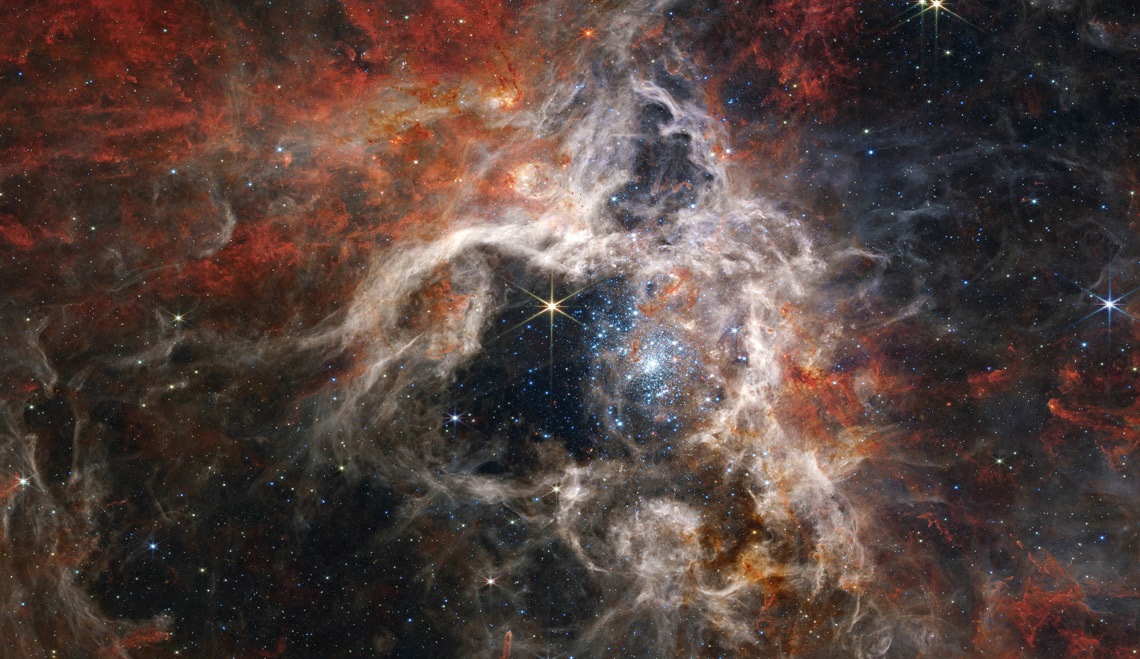The James Webb Space Telescope continues to produce extraordinary images. More were published in September, this time of thousands of never-before-seen young stars in a stellar nursery called 30 Doradus, nicknamed the Tarantula Nebula after the appearance of its filaments. The telescope also captured the detailed structure and composition of the nebula’s gas and dust, a favorite of astronomers who study star formation. The Tarantula Nebula is 161,000 light-years away from the Large Magellanic Cloud, a dwarf galaxy that orbits the Milky Way, and is the largest and brightest region where hot and massive stars are formed in the so-called Local Group of our nearest neighboring galaxies. In the images, massive young stars clustered together glow in pale blue. The denser nearby areas of the nebula resist erosion from stellar winds and create pillars of newly forming stars. In another photo, the hot stars disappear, cooler gas and dust glow, and points of light appear, showing protostars still gaining mass.
RepublishAstronomy
Thousands of stars in a single, clear image

The Tarantula Nebula: the largest and brightest star-forming region near the Milky Way
NASA, ESA, CSA e STSCI

